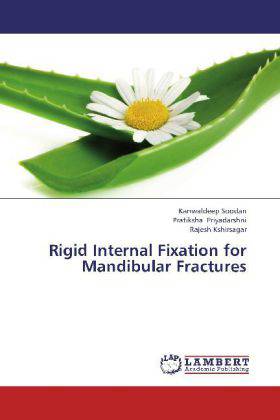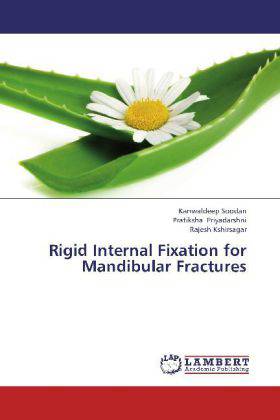
- Afhalen na 1 uur in een winkel met voorraad
- Gratis thuislevering in België vanaf € 30
- Ruim aanbod met 7 miljoen producten
- Afhalen na 1 uur in een winkel met voorraad
- Gratis thuislevering in België vanaf € 30
- Ruim aanbod met 7 miljoen producten
Zoeken
Rigid Internal Fixation for Mandibular Fractures
Kanwaldeep Soodan, Pratiksha Priyadarshni, Rajesh Kshirsagar
Paperback | Engels
€ 78,45
+ 156 punten
Omschrijving
Internal fixation of fractures has been the subject of much discussion over the past twenty-five years. For centuries surgeons have attempted to provide satisfactory treatment for fractures of the skeleton. All attempts, both early and recent, have focused on the time-honored and proven principles of reduction, immobilization and rehabilitation. The most basic variable in the implementation of these principles has been and still is whether the fracture should be treated open, (i.e., operatively exposed to provide means for reduction and / or immobilization) or closed.. In the pre-anesthetic, pre-antiseptic era, closed reduction of fractures was understandably the rule for most fractures. However, following LISTER S introduction of aseptic surgery between 1860 and 1870, the open treatment of fractures was performed in the operating rooms and descriptions of procedures appeared in the world literature.The purpose of this book was to take overview of rigid internal fixation in mandibular fractures in various situations.
Specificaties
Betrokkenen
- Auteur(s):
- Uitgeverij:
Inhoud
- Aantal bladzijden:
- 160
- Taal:
- Engels
Eigenschappen
- Productcode (EAN):
- 9783659314315
- Verschijningsdatum:
- 7/01/2013
- Uitvoering:
- Paperback
- Afmetingen:
- 150 mm x 220 mm
- Gewicht:
- 245 g

Alleen bij Standaard Boekhandel
+ 156 punten op je klantenkaart van Standaard Boekhandel
Beoordelingen
We publiceren alleen reviews die voldoen aan de voorwaarden voor reviews. Bekijk onze voorwaarden voor reviews.








